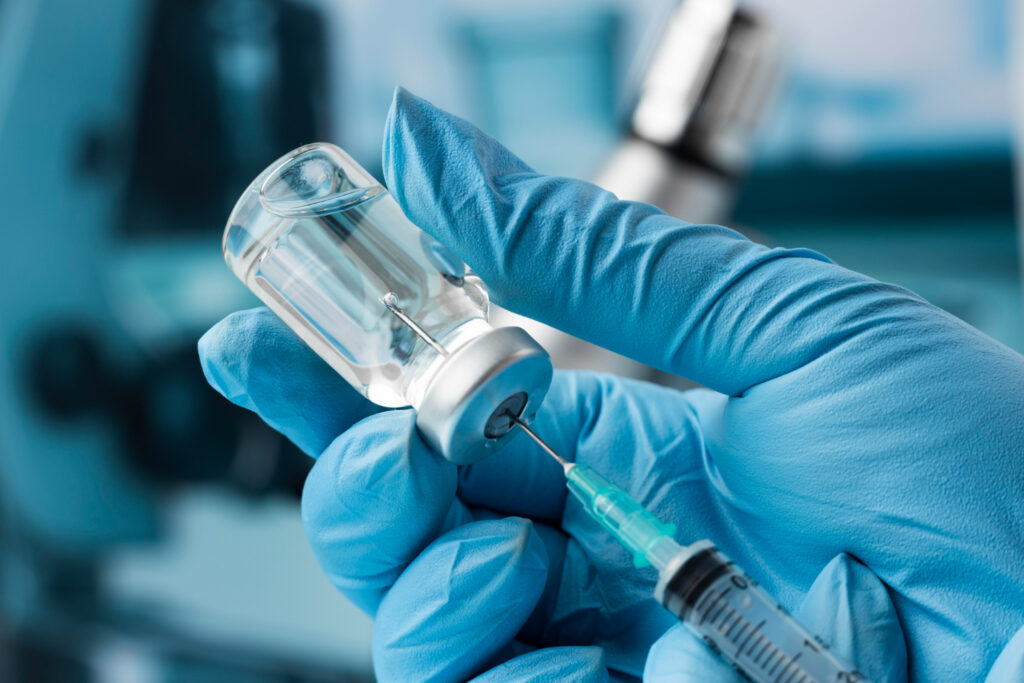AKT Induced Hepatitis;
Overview:
Apart from infectious or viral hepatitis, hepatitis can also result from non-infectious factors such as alcohol consumption, cholestatic conditions, drugs, and exposure to toxic substances.
What Is AKT Induced Hepatitis?
Diagnosing AKT and drug-induced liver injury (DILI) primarily relies on clinical assessment, often without liver histologic samples. Other causes, like viral hepatitis, must be ruled out. Typically, liver damage occurs within months of starting a drug. Confirming DILI involves rechallenging with the suspected drug, resulting in a significant rise in serum ALT, followed by a decrease upon discontinuation. However, rechallenge is risky and usually limited to essential drugs or complex medication scenarios.

Culprit Drugs in AKT Induced Hepatitis:
Drug Related Factors
Finding the hepatotoxicity of individual agents is challenging due to the common use of combination therapy in anti-TB treatment.
- Hepatotoxic Agents -While isoniazid, rifampicin, and pyrazinamide are known to cause hepatotoxicity, ethambutol and streptomycin are considered non-hepatotoxic.
- Specific Drug Insights –
- Isoniazid (INH):
- Most commonly associated with toxicity.
- Observations from monotherapy for latent TB or combined with apparently non-hepatotoxic medications provide insights into its hepatotoxic potential.
- Rifampicin:
- Well-documented cases of drug-induced liver injury (DILI), particularly when used to treat pruritus in patients with primary biliary cirrhosis.
- Relative low risk of DILI observed when used alone in prophylaxis for latent TB.
- Pyrazinamide:
- Known to cause hepatotoxicity, but data derived mainly from observations during combination therapy.
While isoniazid remains the most common drug associated with hepatotoxicity, the risk varies among different anti-TB medications.
Risk Factors:
Patients undergoing antitubercular treatment often develop acute or chronic hepatitis. The combination of isoniazid and rifampicin accelerates the onset of hepatotoxicity compared to isoniazid alone, indicating a synergistic effect.
- Role of Cytochrome P-4502E1 (CYP2E1) -Antituberculosis drugs induce the expression of CYP2E1 in the liver. This enzyme plays a crucial role in drug metabolism and is implicated in hepatotoxicity associated with antituberculosis drugs.
- Genetic Factors in Antituberculosis Drug-Induced Hepatitis – Recent studies highlight the significance of genetic polymorphisms in NAT2 and GST genes as major risk factors for antituberculosis drug-induced hepatitis.
- N-Acetyltransferase 2 (NAT2) Polymorphism – NAT2 enzyme exhibits genetic polymorphism, resulting in slow and rapid acetylation phenotypes in humans. Slow acetylators are at higher risk of developing severe hepatotoxicity compared to rapid acetylators.
- Glutathione-S-Transferase (GST) Deficiency – Deficiency in GST activity, particularly due to homozygous null mutations at GSTM1 and GSTT1 loci, can increase susceptibility to drug and xenobiotic-induced hepatotoxicity.
- Polymorphisms and Liver Injury – Polymorphisms at GSTM1, GSTT1, and NAT2 loci have been associated with various forms of liver injury, including hepatocellular carcinoma. Understanding these genetic factors can aid in identifying individuals at higher risk of antituberculosis drug-induced hepatitis
Contributing Factors in AKT Induced Hepatitis:
Certain factors if present already in patient increases the risk of AKT Induced hepatotoxicity in them. Let’s see some of them:
- Cofactors:
- A. Excessive Alcohol Consumption: Alcohol abuse significantly predicts TB drug-induced liver injury (DILI) in several studies.
- B. Intravenous Drug Abuse: Drug abuse via intravenous routes may increase the risk of liver injury during TB treatment.
- C. Chronic Viral Diseases: Patients with chronic viral infections such as HIV, HBV, and HCV may have a higher susceptibility to hepatotoxicity during TB treatment.
- D. Age :
- Age Over 35 : Increasing age appears to be a risk factor for TB DILI, with rates ranging from 5 to 33% in various studies. Hepatotoxicity rates are higher in individuals older than 35 years compared to younger age groups.
- Children : Pediatric patients, particularly those under 5 years old, have shown higher rates of severe TB DILI, especially when treated with pyrazinamide.
- Studies indicate that a significant proportion of children experience elevated liver enzymes and symptomatic hepatitis during TB treatment.
- Isoniazid Dosage:
- There’s some evidence suggesting that higher doses of isoniazid (greater than 15 to 20 mg/kg) may increase the risk of hepatotoxicity.
- Sex:
- Women may have an increased risk of hepatotoxicity during TB treatment, though findings across studies vary.
- Some studies report a higher risk for women, while others show no significant difference or treatment-limiting effects.
Pathophysiology of Drug-Induced Liver Injury (DILI):
Understanding the intricate process behind the development of idiosyncratic DILI sheds light on its pathophysiology and outcomes.
Key Events:
- Drug-Specific Pathways:
- Certain drugs or their metabolites trigger specific pathways leading to liver injury.
- Formation of Reactive Metabolites:
- Increased formation of reactive metabolites, often due to phase I metabolism or inadequate detoxification from phase II metabolism, serves as an initiating event.
- These reactive metabolites induce the production of excessive reactive oxygen species (ROS), leading to lipid peroxidation and cell death.
- Mitochondrial Dysfunction:
- Mitochondria are a crucial target in DILI; inhibition of mitochondrial respiratory chain leads to adenosine triphosphate (ATP) depletion and accumulation of ROS.
- Manganese superoxide dismutase (MnSOD) plays a vital role in detoxifying superoxide anion radicals in the mitochondrial matrix.
- A variant C allele (genotype T/C or C/C) of MnSOD has been associated with a 2.5-fold higher risk of hepatotoxicity in patients with anti-TB DILI compared to those with MnSOD TT genotype.
Influencing Factors
- Genetic and Environmental Factors:
- Genetic and environmental factors play a significant role in influencing the expression and activities of proteins involved in phases I, II, and III of drug disposition.
- Transcription factor Nuclear Factor Erythroid 2-related factor-2 (Nrf2) regulates glutathione synthetic and detoxification enzymes, modulating the threshold for hepatocyte death secondary to oxidative stress.
- Dysregulation of the activator arm (including Nrf2 and small Mafs) and the repressor arm (including Bach1 and small Mafs) of the antioxidant pathway may contribute to the propagation of anti-TB DILI.
Signs and symptoms:
Common Signs and Symptoms of AKT Induced hepatitis include:
- Jaundice
- Yellowing of the skin and whiteof the eyes due to elevated bilirubin levels in the blood.
- Fatigue
- Persistent tiredness and lack of energy, often disproportionate to exertion levels.
- Nausea and Vomiting
- Persistent feelings of queasiness and recurrent vomiting, which may worsen after meals.
- Abdominal Pain
- Discomfort or pain in the upper right side of the abdomen, often described as a dull ache or stabbing sensation.
- Loss of Appetite
- Reduced desire to eat, leading to weight loss and nutritional deficiencies.
- Dark Urine
- Urine may appear darker than usual due to increased bilirubin levels, indicating liver dysfunction.
- Pale Stools
- Stools may become pale or clay-colored due to reduced bile flow from the liver.
- Itching
- Generalized itching of the skin, often without an apparent rash, due to elevated bilirubin levels.
Rare Symptoms:
- Fever
- Some individuals may experience a low-grade fever, especially if hepatitis is accompanied by an inflammatory response.
- Confusion or Altered Mental Status
- Severe cases of hepatitis may lead to hepatic encephalopathy, resulting in confusion, disorientation, or even coma.
Treatment:
Choosing the most effective yet safest treatment regimen for tuberculosis (TB) requires careful consideration of hepatotoxicity risks and patient factors.
Preference for Isoniazid and Rifampicin
- Efficacy:
- Isoniazid and rifampicin are highly effective in treating latent or active TB infections.
Minimizing Hepatotoxicity Risks
- Monotherapy Consideration:
- Monotherapy with either isoniazid or rifampicin is preferred for latent TB treatment in individuals at higher risk of hepatotoxicity.
- Assessment of Liver Function:
- Patients with unstable or advanced liver disease should undergo baseline serum alanine aminotransferase (ALT) level evaluation.
Recommended Treatment Regimens
- Two Hepatotoxic Drugs Regimen:
- 9 months of isoniazid and rifampicin, plus ethambutol . 2 months of isoniazid, rifampicin, streptomycin, and ethambutol, followed by 6 months of isoniazid and rifampicin
- 6–9 months of rifampicin, pyrazinamide, and ethambutol
- One Hepatotoxic Drug Regimen:
- 2 months of isoniazid, ethambutol, and streptomycin, followed by 10 months of isoniazid and ethambutol.
- No Hepatotoxic Drug Regimen:
- Recommended for patients with advanced cirrhosis or portosystemic encephalopathy.
- Treatment duration of 18–24 months with a combination of ethambutol, fluoroquinolone, cycloserine, and capreomycin or aminoglycoside.
Tailoring TB treatment regimens based on hepatotoxicity risks and patient liver function status is crucial for ensuring treatment efficacy while minimizing adverse effects.
Read More:
References:
- Perwitasari DA, Atthobari J, Wilffert B. Pharmacogenetics of isoniazid-induced hepatotoxicity. Drug Metab Rev. 2015 May;47(2):222-8. doi: 10.3109/03602532.2014.984070. Epub 2014 Nov 19. PMID: 26095714.
- Hussain Z, Kar P, Husain SA. Antituberculosis drug-induced hepatitis: risk factors, prevention and management. Indian J Exp Biol. 2003 Nov;41(11):1226-32. PMID: 15332488.
- Ramappa V, Aithal GP. Hepatotoxicity Related to Anti-tuberculosis Drugs: Mechanisms and Management. J Clin Exp Hepatol. 2013 Mar;3(1):37-49. doi: 10.1016/j.jceh.2012.12.001. Epub 2012 Dec 20. PMID: 25755470; PMCID: PMC3940184.

